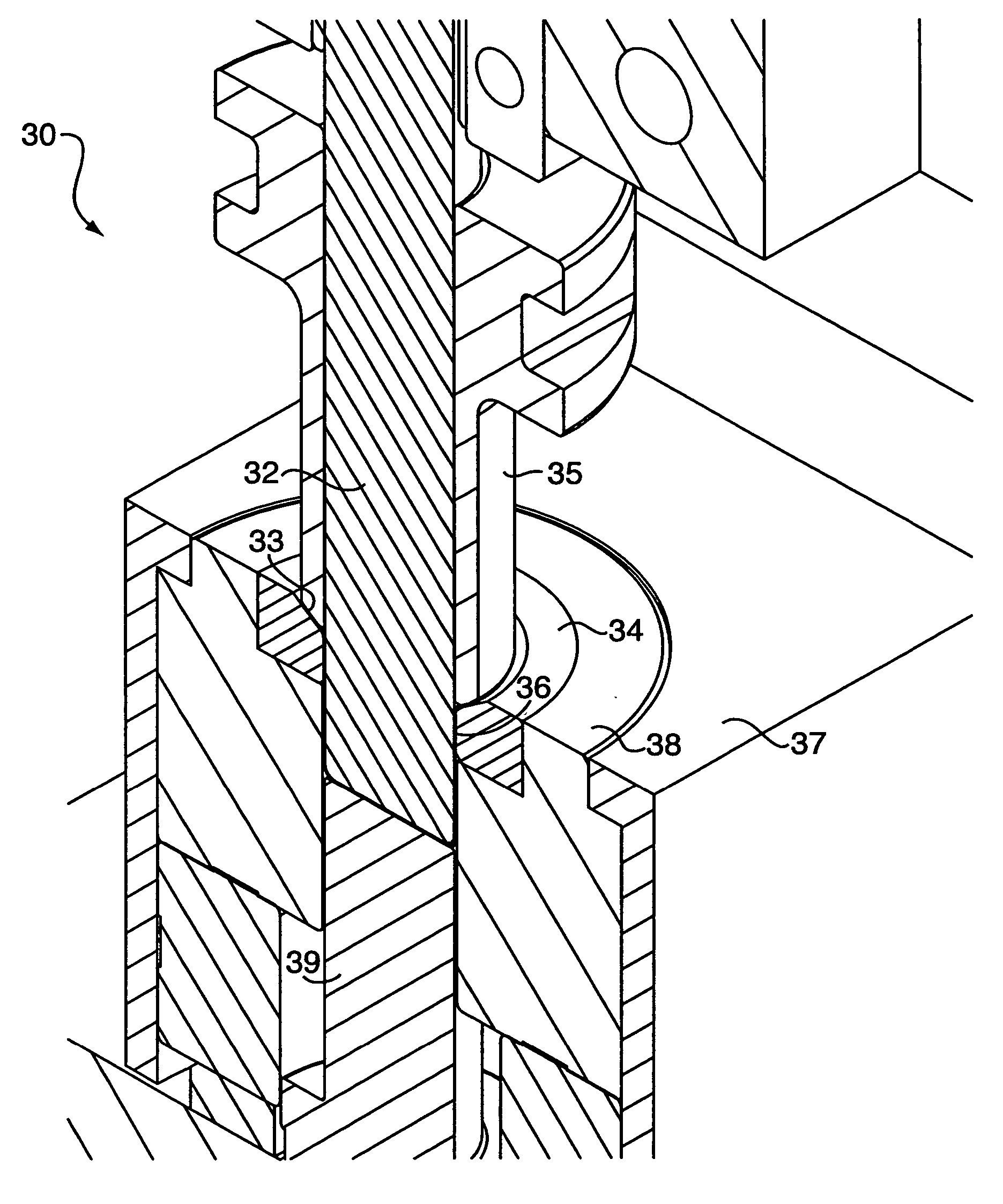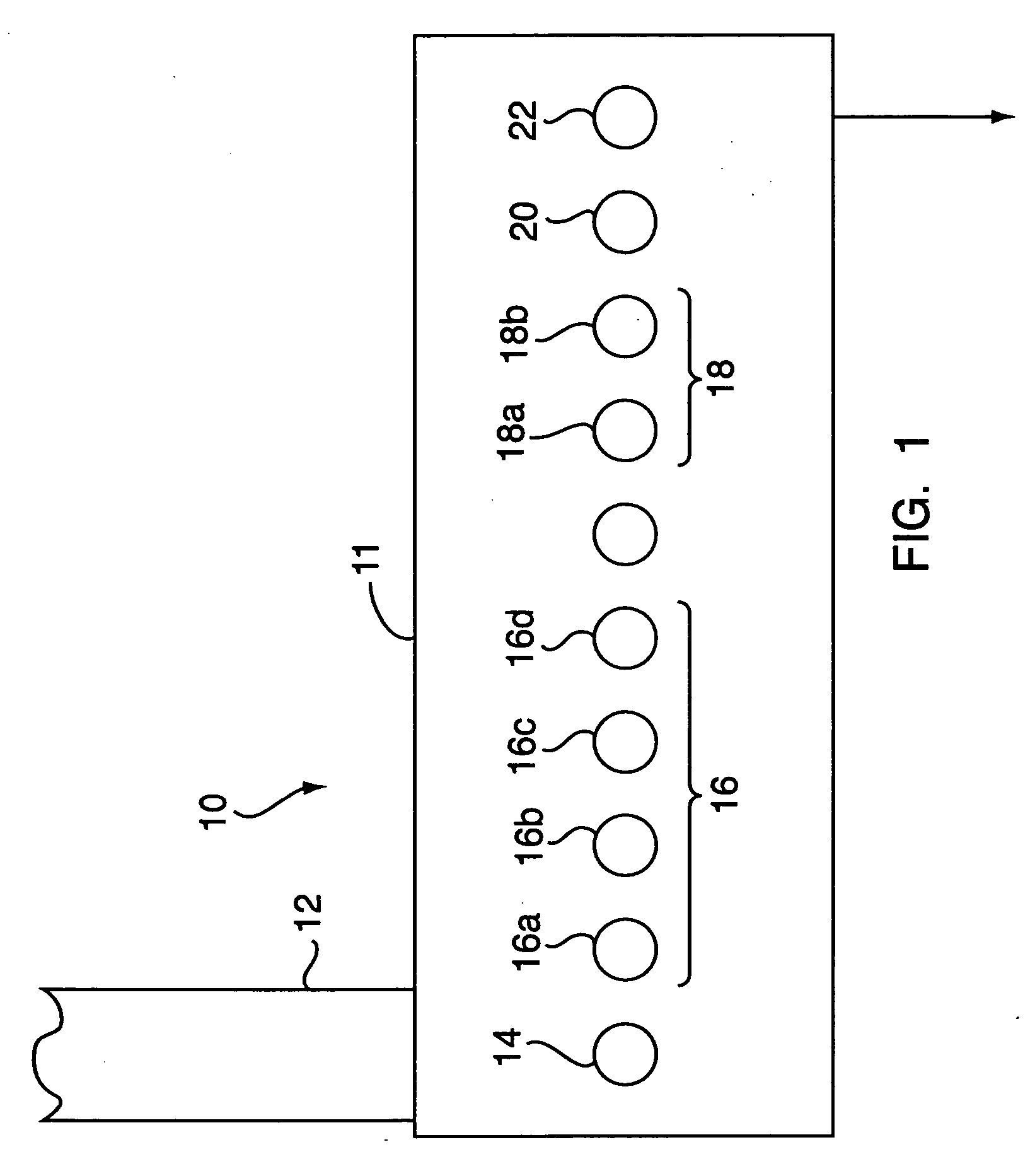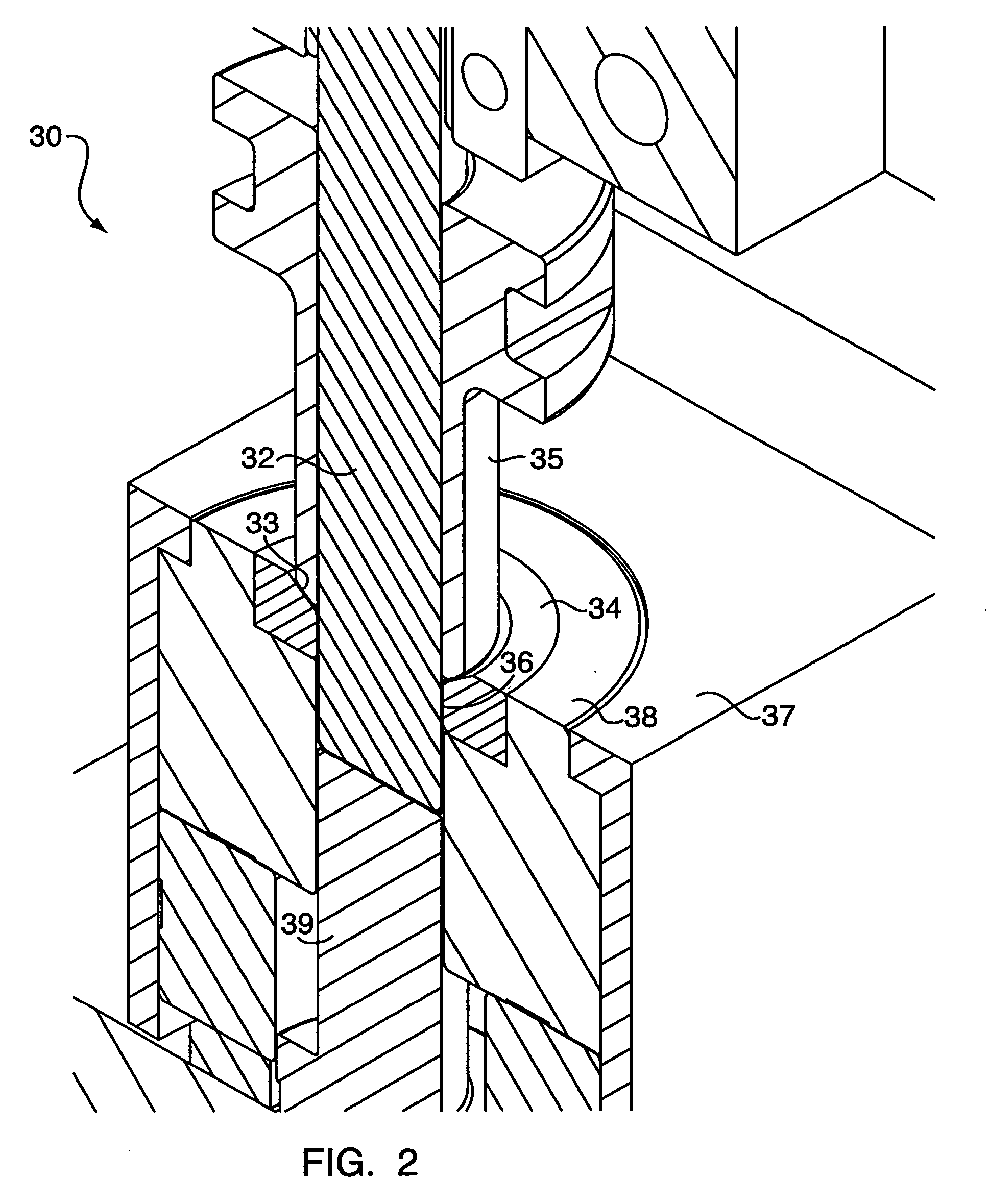System and process for forming battery cans
a battery can and process technology, applied in the field of battery cans, can solve the problems of increasing resistance, reducing the operational voltage and the length of time over which the battery can be discharged, and reducing the contact between the can and the cathode, so as to achieve the effect of minimizing the internal resistance of the battery, and facilitating the discharge of the battery can
- Summary
- Abstract
- Description
- Claims
- Application Information
AI Technical Summary
Benefits of technology
Problems solved by technology
Method used
Image
Examples
Embodiment Construction
[0023] Referring to FIG. 1, a schematic diagram of the draw-iron-redraw manufacturing process in a transfer press is shown generally at 10 and is hereinafter referred to as “DIR process 10.” In the DIR process 10, cans are formed for use in battery cells as described above. Although the DIR process 10 as described below refers specifically to the forming of cans for alkaline battery cells, it should be understood that cans for other types of battery cells may be formed by the process described.
[0024] The DIR process is an improvement to a known transfer press process as described in the aforesaid U.S. Pat. No. 6,526,799. The DIR process is performed in a conventional transfer press 11, which may consist of multiple punch and die stations arranged inline, as depicted schematically in the drawing. Transfer press 11 is supplied with a strip of thin nickel plated steel 12. The feed mechanism is arranged to shift the strip from side to side to minimize scrap, using conventional feed mec...
PUM
| Property | Measurement | Unit |
|---|---|---|
| thickness | aaaaa | aaaaa |
| length | aaaaa | aaaaa |
| diameter | aaaaa | aaaaa |
Abstract
Description
Claims
Application Information
 Login to View More
Login to View More - R&D
- Intellectual Property
- Life Sciences
- Materials
- Tech Scout
- Unparalleled Data Quality
- Higher Quality Content
- 60% Fewer Hallucinations
Browse by: Latest US Patents, China's latest patents, Technical Efficacy Thesaurus, Application Domain, Technology Topic, Popular Technical Reports.
© 2025 PatSnap. All rights reserved.Legal|Privacy policy|Modern Slavery Act Transparency Statement|Sitemap|About US| Contact US: help@patsnap.com



